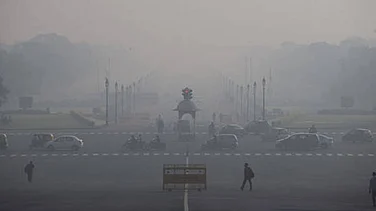With the OTT release of Netflix’s six-episode series IC 814: The Kandahar Hijack directed by Anubhav Sinha, the internet is abuzz with curiosity and excitement around the week-long notorious hijacking of the Indian Airlines flight IC-814 in December 1999.
The harrowing incident since then has been etched as one of the worst crises in India's aviation history. Here's a brief throwback to the terrifying story of crisis, terror, and heroism witnessed by 180 people onboard at 30,000 feet.
IC-814 hijacking: What happened?
The December 24, 1999 incident brought the nation to a standstill as five masked terrorists hijacked Indian Airlines flight IC-814, en route to Delhi's Indira Gandhi International Airport (IGI), for a week following its departure from Kathmandu's Tribhuvan International Airport.
According to the then Minister of External Affairs Jaswant Singh, the message of hijacking was first received by the Air Traffic Control (ATC) in Delhi at 4.56 pm as Captain Devi Sharan, the pilot on board, sent a coded message unseen by the hijackers.
Next, owing to depleting fuel levels, the hijackers wanted to take the flight to Lahore for refueling. However, the permission was denied by Lahore ATC and the hijacked flight was diverted to Amritsar instead. Getting suspicious about the unusually long period of refueling time, the hijackers forced Captain Sharan to fly the hijacked plane to Lahore anyway.
Once again, Pakistan firmly denied the landing of the hijacked aircraft in Lahore before granting permission to refuel the flight on the condition that it would leave Pakistani airspace as soon as the refueling procedure was over.
“Permission to land was given only when the pilot informed ATC Lahore that he would be forced to crash-land the aircraft as fuel had got exhausted,” the External Affairs Minister said, as per reports.
After refueling, the IC-814 took off for Kabul, Afghanistan at 10.32 pm. In another obstacle, Kabul denied clearance for night landing owing to a lack of facilities which prompted them to head for Dubai. India got in touch with the United States, which pressured the United Arab Emirates (UAE) government to allow the aircraft to land in Dubai.
The next daytime landing schedule at Kandahar Airport was reportedly around seven hours later and the aircraft did not have enough fuel to stay airborne for such long hours. In Dubai, the flight landed at 01.32 am on December 25.
After discussions between the UAE authorities and the hijackers, 27 passengers were released at the Al Minhad Air Base in the UAE including the dead body of 25-year-old Rupin Katyal, who was brutally stabbed by the hijackers. The released passengers reached India on a special flight.
Following the offloading, the aircraft then took off at 6.20 am and landed at the Kandahar airport in Afghanistan at 8.33 am where it stayed until the end of the hijacking on December 31.
At Kandahar, the final negotiations took place between the Indian government and the Pakistan-based terror outfit Harkat-ul-Mujahideen (HuM). Despite not being recognised by India, the Taliban government was also involved in the negotiations.
Finally, the hostage passengers and crew reached Delhi via two special flights while the hijacked aircraft returned to New Delhi on January 1, 2000.
Role of the Indian government
The incident occurred during the tenure of Atal Bihari Vajpayee government. When the flight landed in Amritsar for refuelling, there were claims that the Indian government was not prompt enough to stop the flight from leaving Indian soil.
As per media reports, a senior Ministry of External Affairs (MEA) official said, “For us, it was one of the most difficult assignments in recent times. We were expected to develop a rapport with the Taliban with whom we hardly had any communication, leave alone relationship.”
It has been reported that the Indian authorities tried to delay the flight while the National Security Guard (NSG) commandos were flown in from Delhi. The team of commandos reportedly reached Amritsar an hour after the hijacked flight had left.
What did the hijackers demand?
The hijackers demanded the release of 36 terrorists held in India, including the designated high-profile terrorist Masood Azhar, the founder of the notorious terror outfit Jaish-e-Mohammed. Moreover, they also claimed the coffin of Harkat-ul-Mujahideen (HuM) leader Sajad Afghani and 200 million US dollars.
In the end, the hostages were released in exchange for three high-profile terrorists- Ahmed Omar Saeed Sheikh, Maulana Masood Azhar, and Mushtaq Ahmed Zargar.
Taliban's safe passage to released terrorists
Instead of arresting the terrorists, Taliban officials provided them a safe passage to Pakistan.
While the Indian government wanted the hijackers and released terrorists to be considered designated criminals, the Taliban let them leave Afghanistan after 10 hours.



















